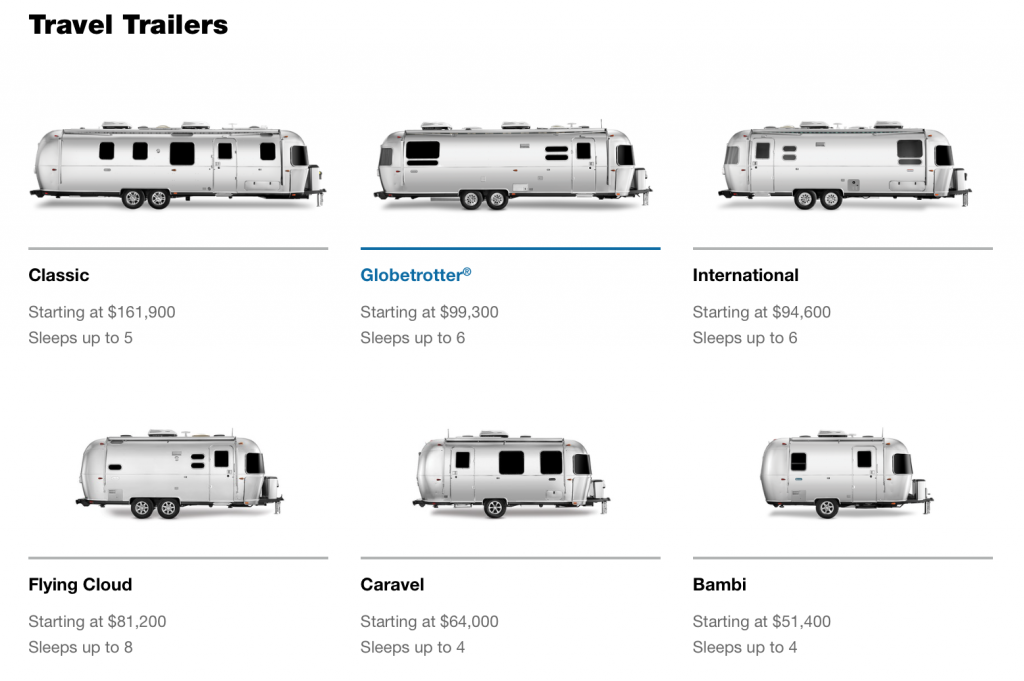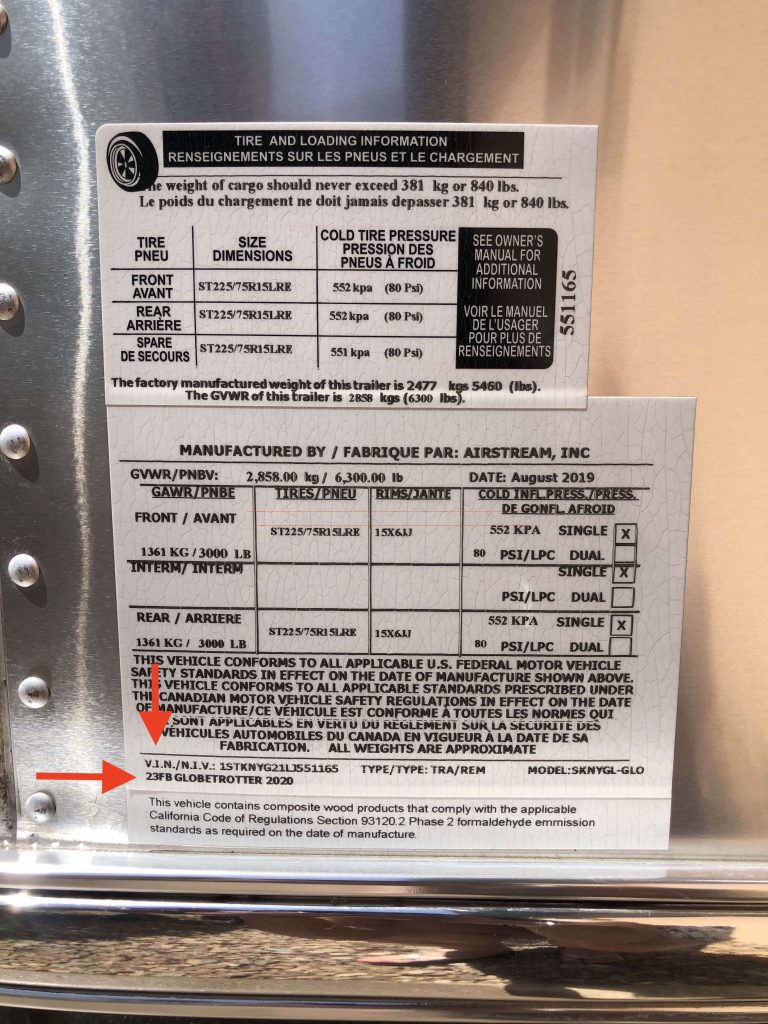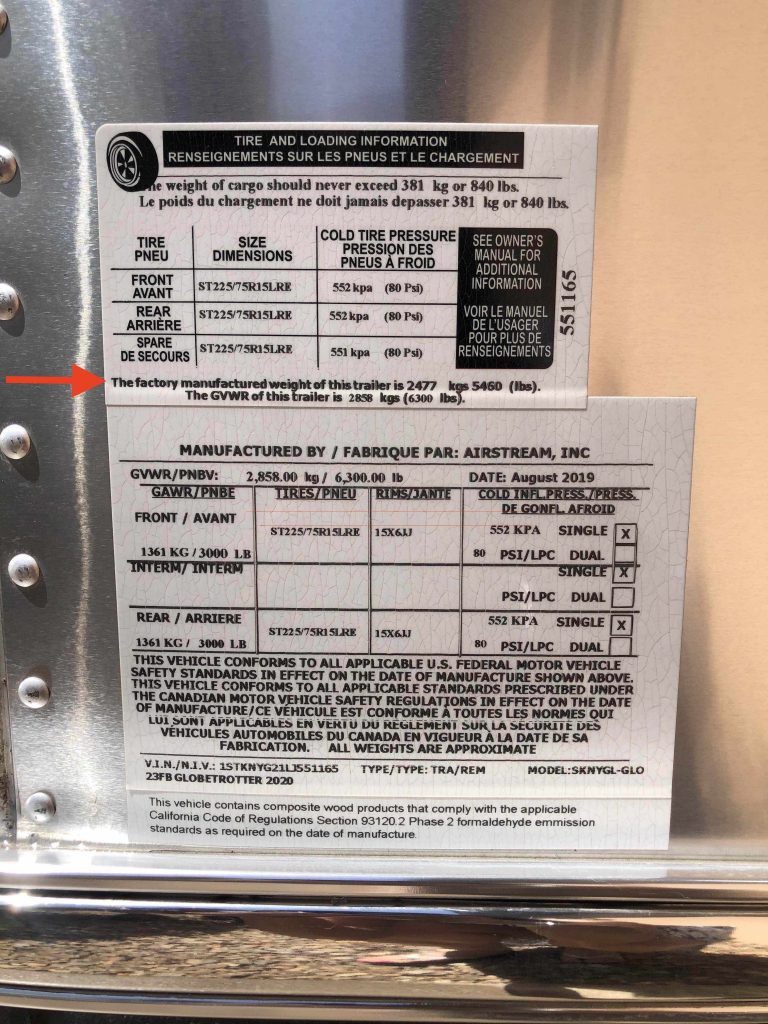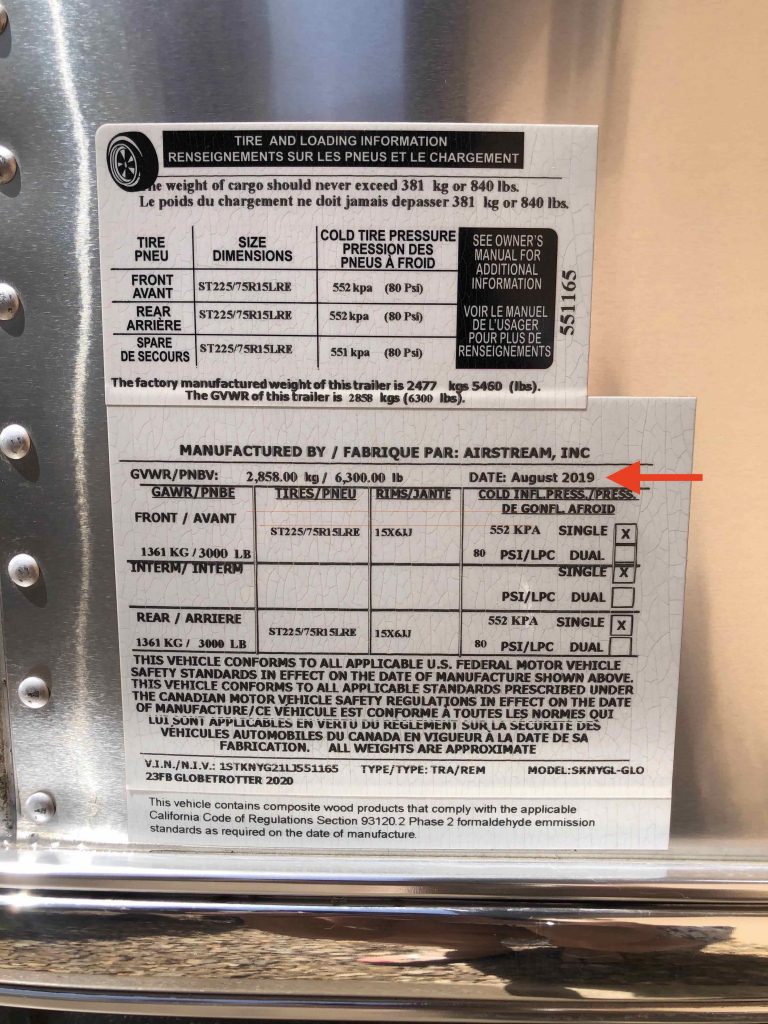One of the biggest decisions a new Airstream trailer buyer has to make is the length.
Short trailers are cute, easy to tow, fit into more campsites, can be towed by a wider range of vehicles, and cost less.
Long trailers are roomier, can carry more stuff (including kids and pets), and tend to offer the most luxurious options.
So how do you decide?
First off, for this discussion let’s assume you’re looking at only new Airstreams. If you’re budget-constrained, you might be able to find a 5-10 year old Airstream at a significant discount, which means you can afford a bigger trailer for the same money. But these days the used market is pretty hot and it’s hard to find a gently-used and relatively young Airstream at a good price.
New Airstreams are in short supply too, thanks to the rush of RV buying that started in April 2020. Airstream is still struggling to keep up with orders and you’re likely to have to wait months to get the Airstream you want. The good news is that this gives you time to think carefully about which model and length will suit you best.
Budget
In the new market as of this writing, Airstreams start at about $40k and top out around $177k for the top-of-the-line Classic 33FB. The Interstate and Atlas motorhomes are more. (All of these prices are before any negotiated discount from the dealer. I wouldn’t count on much discounting right now.)
Price may be the dominant factor that determines your choice. Remember, all Airstreams have the same essentials: bed, kitchen, bath, heat, air conditioning, door, windows. A small trailer has just about everything a big one has, except space. So your first decision should be how much you’re willing to spend. More money means more space and the opportunity to add in some luxe options. For a quick price comparison, check Airstream’s official site.

Even the least expensive Airstream, the Basecamp, comes in two lengths, so you always have some decision to make about size.
Tow vehicles
Another major consideration is your tow vehicle. If you like big trucks you can tow any Airstream. If you want to tow with something smaller you’ll have to look to the smaller, lighter end of the trailer spectrum. If your tow vehicle is limited to a 5,000 pound tow rating you’ll be limited to Basecamp, and Bambi or Caravel from 16 to 22 feet long.
Where will you camp?
Assuming you’ve still got room to consider longer models, you should next consider your “camping style”. (If you’re going to be a first-time buyer you may not be sure about it, but give it a shot anyway.) Ask yourself what sort of camping or traveling appeals to you most, and the kind of places you would like to go. The goal here is to figure out if you’re going to need a nimble trailer—or if you value interior space more.
Many state parks and some national parks have length restrictions, so sticking with something 25 feet or shorter opens up more options in those places. National Forest sites are often even shorter or have access roads that limit trailers to 20 feet or less.
If you enjoy backroads or boondocking, shorter is generally easier. A longer trailer is more likely to bottom out on uneven surfaces. The “X” variation of the Basecamp 16 and Basecamp 20 has more ground clearance, so those trailers are great options. Lift kits that increase ground clearance by 2-5/8″ can be purchased for other Airstream trailers if towing off-road is your jam. (They’re also pretty useful for steep driveway entrances and other spots where the tail end might drag.) Keep in mind that a lift kit will require you to make adjustments to your hitch ball height.
If you are always going to seek out full-hookup campgrounds like RV resorts, you don’t need to worry about this consideration. Nearly all RV parks can handle any length of Airstream.
Gear hauling
You might be surprised to learn that the biggest trailers aren’t always the best for carrying large gear like bicycles and kayaks. The 27-foot Tommy Bahama with rear hatch (previously sold as the Eddie Bauer and Pendleton 27FB) was the sweet spot for gear like that. That trailer was dropped for 2021 but you can still find the rear hatch as an option on the 25FB and 27FB Flying Cloud and International models—and the Basecamp, which is a very decent option even though it only comes in 16 and 20-foot lengths.
Back in 2006, there was also an enormous 34-foot Airstream “toy hauler” called the PanAmerica, which would even carry motorcycles. They’re hard to find now because they were produced in low numbers.
Otherwise, your best option for large items is a rack on a pickup truck. We talked about options for carrying bicycles in an earlier post. The good part about going this route is that it doesn’t matter what size trailer you have.
Longer trailers also tend to have more and larger exterior storage compartments. If this is important to you, consider the option of Twin beds. Twin bed floorplans often have more exterior storage than Queen bed floorplans of equivalent size.
Capacities
Bigger trailers generally have bigger fresh water tanks and bigger waste holding tanks. This means you can boondock for longer times, or be a bit less thrifty with water. A 2021 Bambi 19CB has a 23-gallon fresh water tank and a “combo” black/gray tank that holds 30 gallons of wastewater. It’s pretty good for a weekend of boondocking.
At the other end, the Classic 33FB holds a whopping 54 gallons of fresh water, 37 gallons of gray water (from the shower and sink) and 39 gallons of black water. That’s lot of you-know-what.
Interestingly, going to a larger trailer doesn’t always translate to more electrical capacity. All of the trailers have approximately the same battery storage. People with longer trailers are at a slight disadvantage in this regard because their trailers have more lights, more power-hungry furnaces, and more powered accessories. If you’re a frequent boondocker, you’ll probably want to look into adding battery capacity, switching to Lithium batteries (which have more usable capacity) and/or solar panels, regardless of the size of your trailer.
Similarly, most Airstreams come with a pair of 30-pound propane tanks, probably because that’s plenty for most people who don’t camp in the winter routinely. The largest Airstreams get an upgrade to 40-pound propane tanks because their furnaces are bigger.
Niceties
Even the most basic Airstream is a pretty nice place to spend the night. But maybe you’re a fan of really nice surroundings and fancy amenities like a heated towel bar, solid-surface countertops, a large screen TV that tucks itself away, and all kinds of powered gizmos (adjustable bed, stabilizer jacks, awning, window shades). You can get all of these things in the more upscale trailers, and that generally means the longer trailers because they can afford the weight penalty.
The “entry level” for some of these perks is the Globetrotter 23FB, which retails at $99k, and goes up rapidly from there. (Super-luxe ain’t cheap.) If you like these niceties and your budget can handle it, you’ll be looking at the 23 to 33-foot trailers.
Style
Some people just like small and cozy, while others like big and roomy. Honestly, this preference tends to trump all other logic. I’ve seen two people and two dogs cram into a 16-foot Airstream for a three-month tour because they preferred to live small. I’ve seen single guys tow a 34-footer because they wanted to have room for lots of toys.
If you have one of the smallest Airstreams, get ready for a lot of “that’s so cute!” comments. If you have a magnificent big one, you’ll hear “your Airstream is beautiful!” Either way, it’s going to get a lot of attention as you travel—and either way, you’re going to love it.






 During our trip to Borrego Springs, CA last week, Rich and I talked about the many things we are thankful for. Big things—like how much we love our new 2020 Globetrotter and how excited we are to be creating a five year ‘life plan’ together.
During our trip to Borrego Springs, CA last week, Rich and I talked about the many things we are thankful for. Big things—like how much we love our new 2020 Globetrotter and how excited we are to be creating a five year ‘life plan’ together. It doesn’t matter what it is, as long as you feel grateful for it. It could be something big, like an easy sale of an elderly parent’s home, or a final chemo treatment. Or small, like discovering the best apple pie you’ve ever tasted, or playing a game of catch with your grandson.
It doesn’t matter what it is, as long as you feel grateful for it. It could be something big, like an easy sale of an elderly parent’s home, or a final chemo treatment. Or small, like discovering the best apple pie you’ve ever tasted, or playing a game of catch with your grandson.